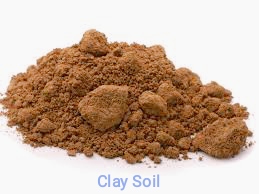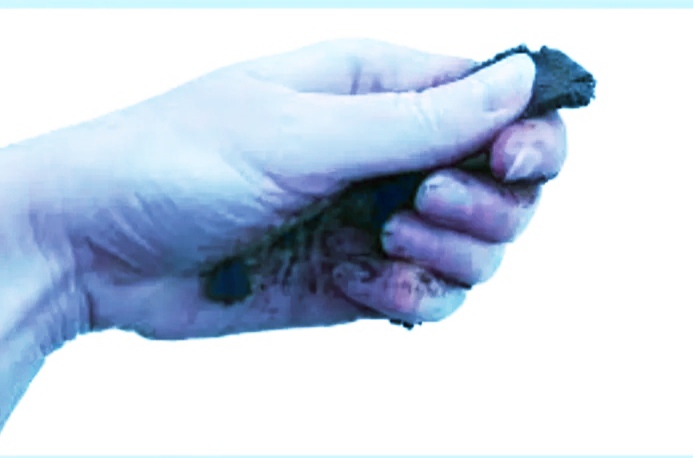Table of Contents
Introduction of Clay Soil
Clay soil is fine grained natural soil consist of clay minerals. This type of soil is composed of very fine mineral particles and mostly organic matter are known as clay soils and benefit from high nutrient content. In this way, clayey soil retains high water holding capacity. Wet clay soils are sticky, with little air in the clay, and soil particle sizes less than 0.2 mm.

Clays develop plasticity when wet due to the molecular film of water surrounding the clay particles, but become hard, brittle and non-plastic when dried or fired. Most pure clay minerals are white or pale in color, but natural clays exhibit a variety of colors due to impurities such as reddish or brownish color due to small amounts of iron oxides.
Characteristics of Clay Soil
The main properties of clay soil are their plasticity when wet and their ability to harden when dried or fired. Clays have a wide water content range with high plasticity, from the minimum water content at which the clay is moist enough to be molded.
The clay is dry enough to retain its shape. Kaolinite clay has a plastic limit of about 36% to 40% and a liquid limit of about 58% to 72%. High quality clay is also robust, judging by the amount of mechanical work required to flatten the clay sample. Its toughness reflects a high degree of internal cohesion.
Amending Clay Soil
Developing clay soil takes time and effort, but the main thing is that working with clay soil immediately improves the structure of the existing soil, making it more comfortable to work with.
When digging planting holes in clay soil, improve the entire planting area at once, rather than individually improving the soil’s planting holes as needed. To strengthen the existing soil, you should add 6 to 8 inches of organic matter throughout the bed.
We can also supply according to their organic requirements. Cut grass, shredded leaves, compost, rotted manure, rotted manure, and compost are excellent options. Then spread the organic matter over the soil. This is where the handwork gets to the organic matter and needs to be combined in the top 6-12 inches of soil. A shovel can be used for this digging and mixing process. This is a very useful tool and can also move large amounts of soil or soil without crushing the soil particles.
When the work is done, the bedding will be a few inches taller than it was before, but it’s not a big deal since the bed garden will fall off seasonally and the organic matter will break down.
The structure of the clay soil continues to improve as the microorganisms in the soil work to break down the organic matter you apply.The bed is ready to be planted. Plan to provide more organic matter in the form of compost once or twice a year. This process continues to improve soil structure and compensate for any subsidence that has occurred. When you purchased the property, you didn’t have the perfect soil at the time, so you needed clay soil promotion.
Clay soils average 2% organic matter, 16% airspace, and 82% minerals. These gardeners typically aim for 50% airspace, 45% mineral content, and 5% organic matter, all of which soil scientists call Ultisol.
Clays Soil Test
Normally, there are two test of clay soil as listed below.
- Jar Test
- Ribbon Test
Let’s discuss more about these 2 clay soil tests.
1. Jar Test
A glass vial was required to perform this test. B. Spaghetti sauce jars, seed jars, etc. Take a cup of soil from the surface approximately 3 inches deep before conducting the test.

Remove rocks and pebbles from the sample, place the soil in a jar, and pour water to within an inch of the top. Next, prepare a teaspoon of borax powder to lock in the particles. If borax powder is not available, you can use any detergent to finish this step.
Then place the cap on top of the jar, shake vigorously for a few minutes if you want to mix well, and let the jar sit on a flat surface for 24 hours. Then you can see the bottom separated into different layers. Sand is heavy in nature, so it’s at the bottom of the jar and the middle layer is full of clay. The clay should sink to the top and finish with clear water at the end.
2. Ribbon Test
To do the tape test, first take a handful of soil from 3 inches below the surface, spread it out on a plate, swirl the jar to pick out any debris or rocks, and arrange the soul in a pile to prepare a small portion of water.

Putty is therefore designed to be meant for wet situations, but not so much in wet situations. And the next step is to roll the soil into a ball shape. If it does not form a ball, there is a place in the sandy soil. Once you have the ball shape, the next step is to shape it into a ribbon or strip shape using your thumb and index finger.
If the soil crumbles when you complete the strip or ribbon shape, you have loamy sand, and if the soil remains to complete a 2-3 inch ribbon, you have loamy soil. This test is also called the strip test.
Uses of Clay Soil
Clay is used for making utility and decorative items, as well as building products such as bricks, wall and floor tiles. Using different types of clay with different minerals and firing conditions produces pottery, stoneware and porcelain.
